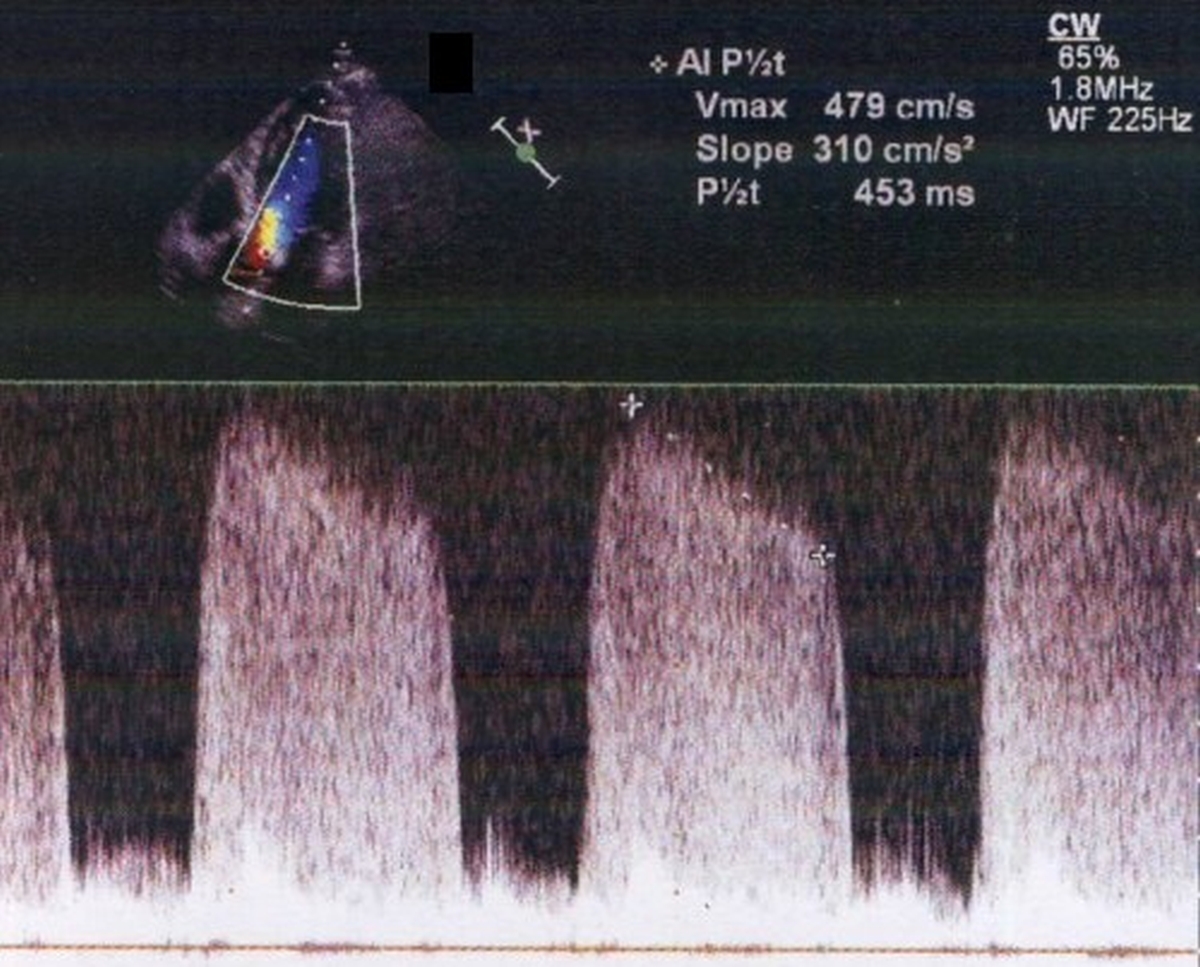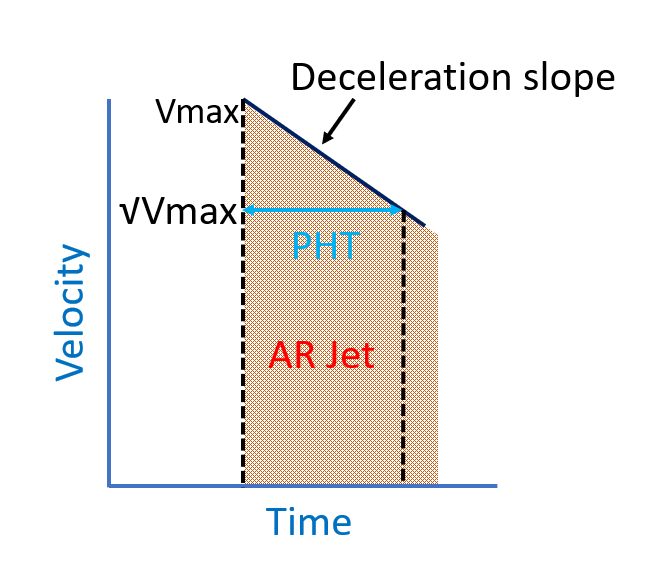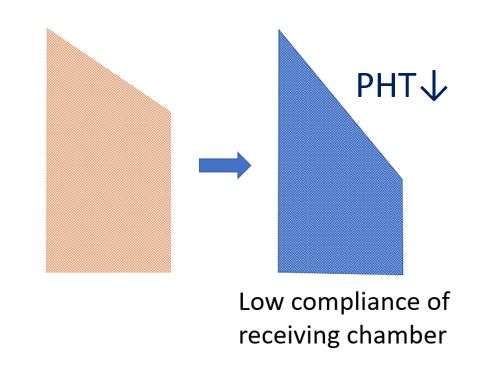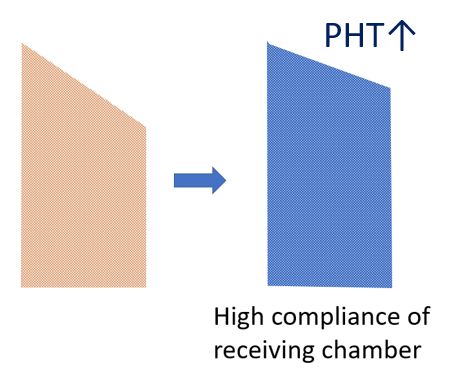Pressure half time in aortic regurgitation
Pressure half time in aortic regurgitation
Abstract: PHT of aortic regurgitation jet is measured from the apical five chamber view using continuous wave Doppler echocardiography. Pressure half time decreases as the severity of aortic regurgitation increases.

Picture demonstrates measurement of pressure half time (PHT) of aortic regurgitation jet using continuous wave (CW) Doppler from the apical five chamber (5C) view. Apical five chamber view with colour Doppler is seen in the upper left corner of the of the image. The Doppler cursor is seen passing through the left ventricular outflow tract and aorta. Aortic regurgitation jet is seen as the positive tracing above the baseline. The peak velocity (Vmax) of the aortic regurgitation (AR) jet is shown as 4.79 meters per second. AR PHT is shown as 453 ms (milliseconds). The AR deceleration slope (AR Dec Slope) is shown as 3,1 m/s2 (meters per second squared).
Pressure half time
Pressure half time is the time required for the peak pressure gradient to reduce by half (1/2) which will correspond to a decrease in peak velocity by a factor of square root of two (21/2).

PHT of a regurgitant jet depends on the severity of the regurgitation and the compliance of the receiving chamber. If the compliance of the receiving chamber is low, the pressure in the receiving chamber rises rapidly and the pressure gradient decreases rapidly leading to a steep slope of the Doppler tracing and a low pressure half time. This is the usual situation in an acute regurgitation when the receiving chamber does not get much time to dilate and accommodate the regurgitant flow. Severe regurgitation also gives a similar picture as the receiving chamber fills rapidly.


PHT in aortic regurgitation
PHT measurement by Doppler echocardiography is useful in assessing the severity of aortic regurgitation. The severity of aortic regurgitation has been classified according to the pressure half time as follows 1:
- Mild aortic regurgitation: PHT >500 milliseconds
- Moderate aortic regurgitation: PHT between 200 – 500 milliseconds
- Severe aortic regurgitation: PHT <200 milliseconds
Limitation of PHT in assessing severity of aortic regurgitation
As mentioned above, pressure half time depends on the the compliance of the receiving chamber and hence it can be reduced by elevated left ventricular diastolic pressure. On the contrary, it can be prolonged if the peripheral resistance is increased and when the aorta is dilated and having a higher compliance2. Vasodilator therapy can reduce the pressure half time in aortic regurgitation.
References
- Lancellotti P, Tribouilloy C, Hagendorff A, Moura L, Popescu BA, Agricola E, Monin JL, Pierard LA, Badano L, Zamorano JL; European Association of Echocardiography. European Association of Echocardiography recommendations for the assessment of valvular regurgitation. Part 1: aortic and pulmonary regurgitation (native valve disease). Eur J Echocardiogr. 2010 Apr;11(3):223-44.
- Griffin BP, Flachskampf FA, Siu S, Weyman AE, Thomas JD. The effects of regurgitant orifice size, chamber compliance, and systemic vascular resistance on aortic regurgitant velocity slope and pressure half-time. Am Heart J 1991;122:1049-56.
